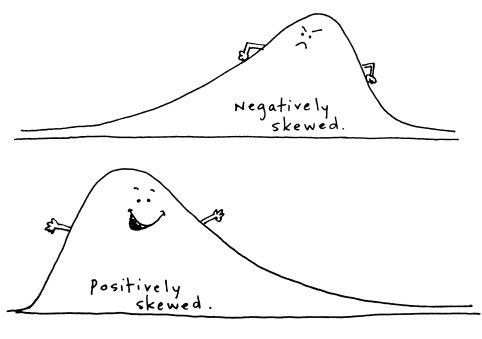
Volume XLIII, No. 5 | February 18, 2021
How to Break the Ice Online
One of the biggest challenges asynchronous, online instructors face is getting students to connect with them as a real person. Often, students view their online instructors as robots, someone who gives assignments and provides grades, but is not really there for them. In this article, I share some of my approaches to breaking the ice virtually with my online students.
Use Memes
I post a “Funny Friday” message each week that includes a math meme. I started sharing memes to be funny, but after several years of weekly posts, I have learned that they provide much more value than just a laugh.
Memes help instructors break the ice and share their personality and sense of humor with students. When we laugh, we create endorphins. Endorphins lower stress and create bonds. Memes help my students create a positive association with math and give them something to look forward to each week. On course evaluations, there are always multiple students who say that their favorite part of the class was the weekly meme.
I find that the memes do a better job of reinforcing a frequently asked question than my verbal announcements do. They get the point across without me having to remind students of an answer multiple times. A funny visual remains with them for longer than reading definitions on a PowerPoint slide.
Show Your Face
When I first started teaching online, I made video lessons of myself talking through math procedures for every lesson. I never showed my face, but there was a connection with my students because they knew that I was the one explaining the process instead of a generic video off of YouTube. The students liked the videos, but there was still a connection gap. The students did not know who I was; they just knew my voice. When students came to the office for office hours, they did not recognize me, and it was always a little awkward.
I was challenged by an instructional designer to make “face videos” so students could see me as well as hear me. I was initially very uncomfortable putting my face online, but I tried it anyway. I kept my voice-over instructional videos, but I switched my start-of-week announcements to a video message instead of a text message.
The difference was instantaneous once I started making “face videos.” Students seemed to complete more assignments because video messages make more of an impact than a text message. When students came by the office (pre-COVID), they immediately recognize me and were much more open. I have been stopped by people in Costco and at restaurants saying, “You’re my online math teacher!” The students know who I am now. If they see me “in the wild,” they know who I am and are comfortable enough to introduce themselves to me.
By seeing me and hearing me, I am more of a complete person to my students than when I was just a voice.
Communicate With Students Directly
The most time-consuming strategy I use to break the ice with students is taking the time to communicate with them directly. A personal message makes an impact that a generic class-wide message does not. Here are three of the ways I communicate individually with my students.
1. Students are required to post an introduction to the class at the start of each term. I respond privately to each post, asking them questions about their background, future plans, and any concerns they have about the course. These messages are very personalized and set the tone for how I will communicate throughout the term. Students usually write me back answering any questions I had for them, and the communication channel is opened.
2. I keep an eye on assignment completion rates, especially at the start of the semester. If a student misses more than one assignment during the first two weeks of class, I send them a personal email. The email is something like: “Hi <student’s first name>, I noticed you did not complete week one’s work. Is everything okay? Do you have any questions about what you need to do to be successful in this class? Please let me know how I can help.” I use a non-threatening and friendly tone. I want to reach them from a place of concern, not accuse them of being lazy. Five out of the seven students that I reached out to this semester wrote me back, apologized for the missing assignments, and started completing the work. I believe that students need to know that we notice when they miss assignments. They are not just names on a roster, and we want to help them succeed. A personal message pointing out the missing work can be enough to get them re-engaged in the class.
3. The third way I personally engage with my students is by setting up one-on-one meetings with them after the first test. These meetings used to be in my office, but now they are online video chats. During these sessions, we review how they feel about the course, how they feel about their first test grade, what their study plan has been, and what adjustments need to be made moving forward. The meetings happen early enough in the semester so students can improve their grades and earn credit for the class, even if their first test score was very low.
These direct forms of communication tell students, “I see you. I care about you. I am here for you.” In college, it can be hard for students to feel like they belong and that they are noticed as individuals. By reaching out to them personally, they know I am someone who they can turn to if they need help navigating their college experience.
Now that I intentionally try to connect with students, my online classes are more enjoyable. I am able to develop relationships with students like I would in an on-campus class, even though we are rarely in the same space. The students do better in the class because they know they can reach out to me if they need help on an assignment or with a personal situation. They are no longer scared to contact me since I have reached out to them multiple times. It is worth the effort to break the ice and get to know students as individuals!
Meghan McIntyre, Professor, Mathematics
For more information, contact the author at Wake Technical Community College, mmcintyre@waketech.edu.





